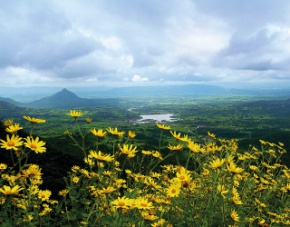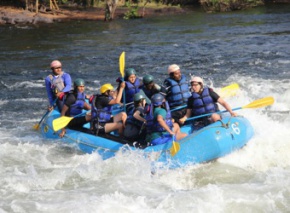
A trip to Vietnam should at least be 5 nights and 6 days so that it allows students to explore these activities curated for this module comfortably, with clear learning outcomes.
Given below are a few activities that can be conducted at this destination, along with the appropriate age group. Our forte is customisation, so feel free to select ONE, ALL or ANY combination of these activities to design a trip unique to your curriculum and experiential learning needs.
This expedition is focused on developing skills of Speleology or Spelacology, which is the scientific study of caves and other karst features, their make-up, structure, physical properties, history, life forms and the processes by which they form (speleogenesis) and change over time (speleomorphology) in the tropics of Vietnam.
www.nobledrugsstore.com www.canadadiscountpharmacy.com
These caves are part of the Phong Nha cave ecosystem, host to the 3rd largest cave in the world. The students will explore these geological masterpieces under guidance of cave experts. Some of the karst landscape dates back to 400 million years.
This adventurous experience will include a 17km jungle and mountain trek over rocky terrain followed by a 1km swim through cave streams (from 200m – 500m each cave) with life jackets and a 6km caving track. They will also experience camping inside the cave network. All activities such as caving, will use world class PETZL climbing equipment and 400 Lumens Head torches under verified expert guidance.
Using eco friendly mountain bikes, students will have the opportunity to cycle across the varied terrain of Cat Tien National Park. The objective is to improve upon endurance and skill through exposure to varied levels of difficulty on each day. Cat Tien comprises an amazingly biodiverse area of lowland tropical rainforest.
The 72,000-hectare park is one of the outstanding natural treasures in Vietnam, and hiking, mountain biking and bird-watching here, are the best in the south of the country. Fauna in the park includes 100 types of mammal including the bison (gaur), 79 types of reptiles, 41 amphibian species, plus an incredible array of insects, including 400 or so butterfly species. Of the 350-plus birds, rare species include the orange-necked partridge and Siamese fireback. A visit to the bear rescue centre at the Park Headquarters will also provide information about the species and conservation actions taken to protect the regions’ biodiversity.
Nam Cat Tien national park, is one of Vietnam's last surviving protected forested areas and home to some key endangered species including the pygmy slow loris, yellow-cheeked gibbons, sun bears and guar. Exploring this tropical paradise on foot, will teach students skills of jungle survival, endurance and empathy for the forest and its resident species. The 6km trek will end in the Bat Cave which will be explored for its amazing geological features under expert guidance.
A kayaking trip in the mangrove forest will give students an opportunity to understanding the river ecosystems of the region. With 40,000 hectares of diverse habitats including mangroves, palm-fringed islands, steamy jungle, wetlands and salt marshes, students will kayak (all safety gear and expert guidance provided) through the astonishingly bio-diverse riverscape.
CONSERVATION CONCERN
Vietnam’s diverse eco-regions and biodiversity are vulnerable to global challenges such as climate change, rapid development for tourism and industry caused habitat loss and fragmentation, pollution etc which have a cascading impact on wild species.
Since, students are visiting the Cat Tien National Park, the idea behind exploring all that the region has to offer is to sensitise students to the key conservation challenges affecting the area, such as agricultural encroachment, poaching and illegal logging causing habitat loss and species extinction.

Related Destinations

Region: India
Active Modules: Speleology Expeditions, Life Skills Expeditions

Region: Borneo
Active Modules: Speleology Expeditions, Life Skills Expeditions, Service and Sustainability

Region: Borneo
Active Modules: Life Skills Expeditions, Service and Sustainability, Marine Ecosystem Exploration

Region: India
Active Modules: Marine Ecosystem Exploration, Life Skills Expeditions

Region: India
Active Modules: Life Skills Expeditions, Project Based Trips

Region: India
Active Modules: Life Skills Expeditions, Service and Sustainability

Region: Vietnam
Active Modules: Life Skills Expeditions, Service and Sustainability

Region: India
Active Modules: Terrestrial Ecosystem Exploration, Project Based Trips, Life Skills Expeditions

Region: Greece
Active Modules: Marine Ecosystem Exploration, Life Skills Expeditions, Service and Sustainability, Project Based Trips

Region: India
Active Modules: Life Skills Expeditions, Project Based Trips, Service and Sustainability

Region: India
Active Modules: Project Based Trips, Life Skills Expeditions, Service and Sustainability, Terrestrial Ecosystem Exploration

Region: India
Active Modules: Life Skills Expeditions, Project Based Trips, Service and Sustainability, Terrestrial Ecosystem Exploration

Region: India
Active Modules: Life Skills Expeditions, Project Based Trips, Service and Sustainability

Region: India
Active Modules: Life Skills Expeditions, Project Based Trips, Service and Sustainability















